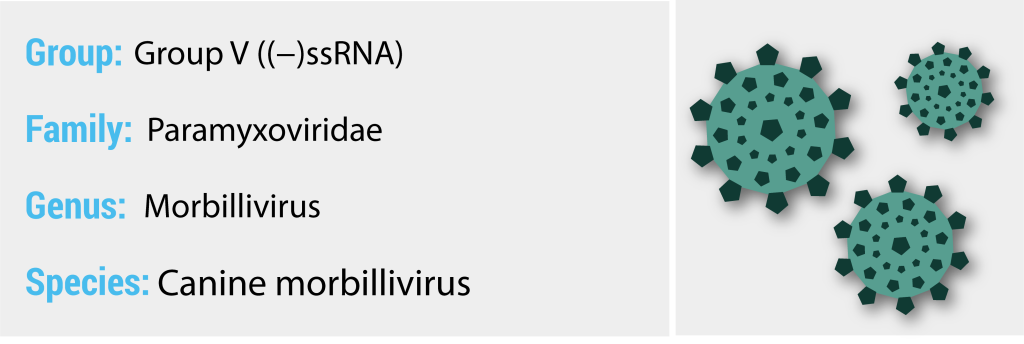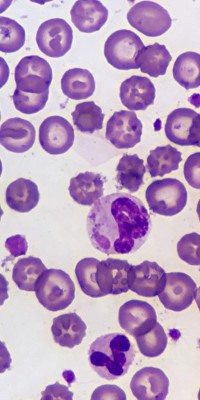Canine distemper is a contagious and serious viral illness with no known cure. The disease affects dogs, and certain species of wildlife, such as raccoons, wolves, foxes, and skunks. Canine distemper belongs to the Morbillivirus class of viruses, and is a relative of the measles virus, which affects humans. Distemper impacts several body systems, including the gastrointestinal and respiratory tracts and the spinal cord and brain. Young, unvaccinated puppies and non-immunized older-dogs are at the greatest risk of infection.
Transmission:
The virus is spread through the air by direct or indirect (i.e. utensils, bedding) contact with an infected animal. The disease can be acquired from improperly attenuated vaccines, though this occurs rather rarely. Non-immunized dogs that come into any kind of contact with an infected animal carry a particularly high risk of contracting the disease.
Symptoms:
Canine distemper virus initially attacks a dog’s tonsils and lymph nodes and replicates itself there for about one week. It then attacks the respiratory, urogenital, gastrointestinal, and nervous systems. Symptoms include:
- Fever
- Yellow discharge from eyes and nose
- Lethargy
- Anorexia
- Diarrhea
- “Hard pads” caused by the enlargement and thickening of the pads on the animal’s feet


